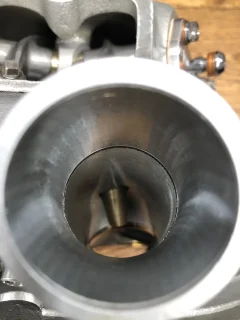- Joined
- Feb 21, 2013
- Messages
- 336
With a polished inlet port the fuel droplets tend to cling to the wall giving poor distribution of fuel droplets in the air in this region. With a rough surface there is a turbulent region close to the wall that gives improved fuel/air mixing at the expense of slightly reduced volumetric efficiency.Please take with a grain of salt - I have only minor personal knowledge of porting...
Around 1970 I was talking to the Triumph 500 tuner for the 1966/67 Daytona 200 winning bikes. A Triumph 500 with twin carbs produces pitiful HP but they handled excellent and had excellent riders. He told me that they tried a few things for more power. One was larger, straighter, polished intake ports - made the bike slower. Then they tried standard ports but polished - still slower than stock. Then they just cleaned them up and made them a little rougher than stock - that made them faster. He said the only other big things they did were "650 racing springs", exhaust porting, and high-compression pistons (I think 13:1). At the same time, there was factory-made a 5-speed gearbox for the 500 sitting on the shelf with me drooling over it. Only two existed and none on the road so it wasn't allowed to be used for the races.
Most people however, prefer the look of a polished port.

